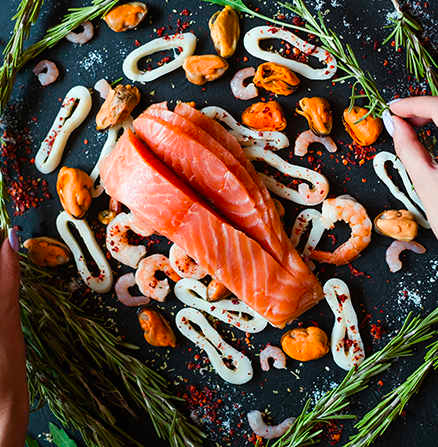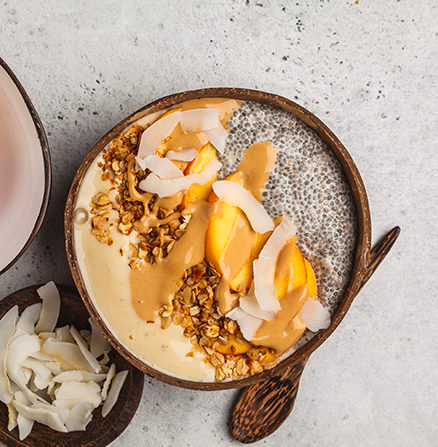Food photography tips.
Australia’s culinary scene is a vibrant mix of flavours and influences, offering endless inspiration for photographers.

Australia’s culinary scene is a vibrant mix of flavours and influences, offering endless inspiration for photographers.
Picture this: You're dining at an exquisite Aussie eatery, where every detail, from the ambient lighting to the chic décor, sets the scene for a memorable meal. As you're soaking it all in, your beautifully plated dish is served. It's the perfect moment for a photo, right? Yet, when you try to capture the essence of your dish, the result doesn't quite do it justice. That gorgeous meal, so appealing in person, looks unremarkable through your lens. But where did you go wrong?
Mastering food photography is an art that demands more than a casual click. It's about understanding the nuances that turn a good dish into a visual story. With the help of this guide, you’ll be equipped with expert food photography tips and insights that will help you take your culinary shots from ordinary to extraordinary.
First things first — you’ve got to understand the food photography industry. Experienced photographer and teacher Ben Long explains, “If you’re looking at professional food photography in a food magazine or in a really upscale cookbook, that’s great to aspire to, but don’t be disappointed when your shots don’t look like that — because you’ve got to remember that in a situation like that, they’ve got a professional food stylist who has come in to basically do hair and makeup on the food. They have a tremendous bag of tricks for styling food, all of which make the food toxic and inedible.”
“So if you’re actually just trying to set some food out and shoot it, you’re inherently at a disadvantage compared with someone who’s a professional food stylist. But that doesn’t mean you shouldn’t continue to try. Just set achievable, realistic goals for yourself. Otherwise, you’ll be pounding your head against the wall.”


Long continues, “There’s very little on a professional food photography set that you can actually eat. It’s very rare that any ice cube you see in professional food photography is real. Water splashed on lettuce — that’s not real. There are just so many tricks food photographers use. So if you’re actually just trying to set some food out and shoot it, you’re inherently at a disadvantage compared with someone who’s a professional food stylist. But that doesn’t mean you shouldn’t continue to try. Just set achievable, realistic goals for yourself. Otherwise, you’ll be pounding your head against the wall.”

With that said, it is entirely possible to create stunning, appetising images with real, edible food. But if you're keen to dive into the world of food photography, starting with the basics is key. Food photographer Sarah Aagesen explains, “I typically always try to have a plan. I’ll have a style in mind that I want to do before I start.” So before you start, be sure you have the materials, props and gear you need.
In food photography, timing is everything — especially with food that changes appearance rapidly, such as frozen treats or steaming dishes. A melting icy pole or a cooling latte showcases very different textures and colours over time. Dive into some research on your food subject to anticipate these changes. It can also be helpful to prepare several samples of your dish to ensure you have the best-looking version ready for the shoot — every apple or ice cream scoop might not be camera-ready, so options are key.
Consider the temperature of your food as well. The steam from a hot dish can create challenging lighting and shadow effects, potentially obscuring the vibrant details you aim to capture. Therefore, allowing a hot dish to slightly cool can make a world of difference in your photos.

Once you know what your subject will be, it’s time to find the ideal setting to shoot in. Your food item should influence and affect this location decision. Long says, “The texture that you’re shooting on might be important. If you’re shooting a Mediterranean salad, you maybe don’t want a lot of rustic Americana props around. You want stone or tile or something like that underneath the salad bowl.”

Reflect on where the dish is typically enjoyed. A gourmet beefburger, for instance, might seem out of place on an elegant white linen tablecloth—unless you're aiming for a contrast that makes a statement. Your choice of location not only influences the aesthetic appeal but also dictates the lighting conditions, playing a pivotal role in the overall look and feel of your culinary photography.
Sarah Aagesen suggests caution when dealing with direct sunlight, highlighting the charm of diffused natural light for food photography. She advises, “Consider shooting through a window, if it’s not direct sunlight or through a white curtain that diffuses the light.” Overcast and cloudy days can often offer the perfect lighting conditions, and while photographing food outside may seem counterintuitive, Aagesen says that sometimes that’s where you’ll find the best light.
If natural light isn't cooperating, don't fret. Utilising softbox lights can equally do wonders. Positioning them strategically around your subject to bounce light off ceilings or walls can ensure a balanced, shadow-free environment. It's wise to avoid relying solely on overhead household lighting, as it can distort the true colours of your dish, introducing unflattering orange or yellow tints that detract from the appeal of your food.


The secret to captivating culinary photography lies not just in the shot but in the styling — but don’t worry about making it picture-perfect. The focus should be on making it look appetising, Aagesen explains. “I’ll start with something that’s pretty unstyled, with maybe just the smoothie in the bowl to start. And I'll take photos along the process as I’m adding things. So I’ll have them through different steps, in case I end up going too far or adding too much. Sometimes you’ll add a few things and think, ‘You know, it looked better a few less ingredients ago.’”
Photographing and documenting your food as your style can help to ensure you get the shot you need. This also lets you look at your progress and identify what needs to be changed or shifted in your food composition.
“Typically when I’m starting out, I will take one or two shots with things really simple, with just the dish in there, with a clean background. So then I have that as an option and then I'll start adding in props.” says Aagesen.



In food photography, precision with shutter speed and aperture is key. For example, if there’s text on a label you’re capturing, you need to be careful that the shutter speed on your DSLR camera isn’t too slow. Any slight movement could blur the packaging text and ruin the shot. Aagesen often opts for a lower aperture, around 2.5 to 4.6, to keep the focus sharp, adjusting it higher for overhead captures. The right depth of field—whether deep or shallow—draws the viewer's eye to your focal point, subtly blurring out the backdrop to keep distractions at bay. But remember, don’t go too narrow or the whole dish may not stay in focus.

The structure of your composition is also important, and using the rule of thirds is a great way to keep this in check. Photographer Samuel Nute’s advice is to keep the most important compositional elements, aka the food, placed along those lines or at the intersection points that make up the rule-of-thirds grid. “Think of your viewfinder as broken up into nine different sections and try and stay cognizant of what’s filling up six of those areas,” he says.
Culinary photography is similar to still life photography and using the rule of thirds can “make all of your photos instantly look better,” according to photographer Derek Boyd. Keeping composition tools like this in mind can quickly make your food photography shoot more successful. And if you don’t nail the composition while shooting, don’t forget about photo editing in post-production. With Adobe Photoshop. You can always crop in and edit colours later to perfect the shot.

Alternating between tripod and handheld shooting can offer varied perspectives and compositions. This flexibility allows for spontaneous creativity, enabling you to explore different angles and framing options. A tripod can stabilise your setup for detailed close-ups, while handheld shooting encourages dynamic, on-the-fly adjustments.
Embarking on your food photography journey allows you to capture the essence of Australia's diverse culinary scene. From fresh produce at local markets to the elegance of your kitchen setups, each photo narrates the rich tapestry of flavours—from the vibrant colours of Southeast Asian dishes and the rustic charm of Aussie barbecues to the refined simplicity of modern Australian fusion. The insights and tips in this guide equip you to elevate every meal into a visual celebration of Australia's multicultural cuisine.
Keep in mind, the journey doesn't end when the shutter clicks. Adobe Photoshop offers the creative freedom to fine-tune your images post-shoot, ensuring every dish looks as delectable digitally as it does on your plate. Whether adjusting lighting, enhancing colours, or perfecting compositions, Photoshop is your digital sous chef, ready to embellish your culinary captures.
We invite you to share your gastronomic masterpieces, refined with Adobe Photoshop, on social media or in Adobe’s community forums. Engage with a community of fellow Australian food photography enthusiasts, exchange tips, and inspire each other with your creative visions. Every photograph you take is a step further in your food photography adventure. So keep experimenting, keep learning, and most importantly, keep enjoying the delicious journey. Bon appetit and happy editing!
Create beautiful images with Photoshop brushes, Content-Aware Fill, Photo effects, Neural Filter, Sky replacement and the many tools photographers rely on.
Explore the Photoshop family of apps.
Ben Long, Samuel Nute